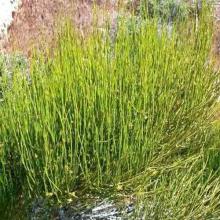Ephedra sinica
Common name:
Mormon tea
Genus:
Ephedra
Family:
Ephedraceae
Order:
Ephedrales
Ephedra sinica
Common name:
Mormon tea
Genus:
Ephedra
Family:
Ephedraceae
Order:
Ephedrales
Ephedra sinica
Common name:
Mormon tea
Genus:
Ephedra
Family:
Ephedraceae
Order:
Ephedrales
Family (Plantae): Ephedraceae
Ephedra is a genus of gymnosperm shrubs, the only genus in its family, Ephedraceae, and order, Ephedrales. The various species of Ephedra are widespread in many lands, native to southwestern North America, southern Europe, northern Africa, southwest and central Asia, northern China and western South America.
In temperate climates, most Ephedra species grow on shores or in sandy soils with direct sun exposure. Common names in English include joint-pine, jointfir, Mormon-tea or Brigham tea. The Chinese name for Ephedra species is mahuang (simplified Chinese: 麻黄; traditional Chinese: 麻黃; pinyin: máhuáng; Wade–Giles: ma-huang; lit.: 'hemp yellow'). Ephedra is also sometimes called sea grape (from the French raisin de mer), a common name for the flowering plant Coccoloba uvifera.
Description
The family, Ephedraceae Dumort., of which Ephedra is the only genus, are gymnosperms, and generally shrubs, sometimes clambering vines, and rarely, small trees. Members of the genus frequently spread by the use of rhizomes.
The stems are green and photosynthetic. The leaves are opposite or whorled. The scalelike leaves fuse into a sheath at the base and this often sheds soon after development. There are no resin canals.
The plants are mostly dioecious: with the pollen strobili in whorls of 1-10, each consisting of a series of decussate[6] bracts. The pollen is furrowed. The female strobili also occur in whorls, with bracts which fuse around a single ovule. There are generally 1-2 yellow to dark brown seeds per strobilus.
Reference: Wikipedia

